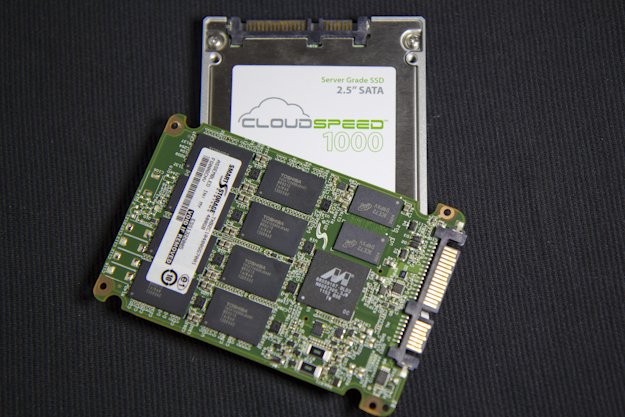Over the past few years, the enterprise SSD market has fractured. It wasn’t that long ago that your only choice was an SLC-based SSD that excelled at everything. High write endurance, low latency and excellent performance were the hallmarks of these enterprise SSDs. A single drive class that excelled at everything, but cost. Since then, we have been introduced to no fewer than 4 different SSD classes that are all trying to carve up the market below that upper SLC class. We have read oriented without enterprise features (Samsung 843), read oriented with enterprise features (Intel S3500, SMART 1000), high-endurance eMLC (Intel S3700) and finally, high endurance MLC (Seagate 600 Pro SMART 1000E).
By carving up the sector into so many segments, it becomes very difficult to tell which drives fit where and what to compare them to. It also makes the buying decision extremely hard. With the CloudSpeed 1000 and 1000E, SMART isn’t making the decision any easier.
We spent the majority of our time with the CloudSpeed 1000E and came away impressed. It matched or exceeded every competitor with random read performance. In mixed and server workloads, it stayed with the Intel S3700 that we are so fond of, while running past the Intel S3500 in most tests. When you combine this with excellent write endurance from the 19nm Toshiba MLC NAND and a healthy amount of overprovisioning, the 1000E has a lot to offer.
One thing that we were pleasantly surprised to see was the performance at low queue depths. Even though SMART is targeting servers and the cloud, the 1000 and 1000E would both make excellent workstation drives.
But, and there is always a but, it all comes at a price. If the pricing of Seagate’s 600 Pro line is any indication, the 1000 and 1000E that we tested will have the same, or close to the same, list price. That means that the 1000E will carry a higher price per gigabyte (400GB v 480GB). SMART was tight-lipped on the exact price, but to remain competitive, the 1000E will need to be somewhere between the Intel S3500 and S3700, preferable closer to the former.
We also would have appreciated a little bit better sequential performance along with 512 byte random performance. We don’t feel that these are major flaws and could possibly be improved with subsequent firmware releases.
Overall, we were impressed with both drives. Neither drive is substantially better than other drives in their respective classes, which is why pricing will be so important. With that said, if you are in the market for an enterprise SSD that combines MLC pricing with eMLC performance and endurance, the SMART CloudSpeed 1000E would be a great choice.
 The SSD Review The Worlds Dedicated SSD Education and Review Resource |
The SSD Review The Worlds Dedicated SSD Education and Review Resource | 

Why is it that “Enterprise” SSDs do not have SAS interface?
Without SAS “Enterprise” devices should really be called “Prosumer”.
That’s a heck of a jump considering the large number of enterprise systems that utilize the SATA interface. I am not aware of many prosumer sales for a product such as this, however sales of the original 500 version would have justified the initial investment for development of the drives.
One step at a time…
At SNIA’s IOPS test, which QD did u used for the test? 4? 16? 32?? 128???
ki – We use a QD of 32, unless otherwise noted. I’ll make sure to call that out next time.
Very slowly recognition In Lenova T61, difficult to use it, Have you any idea about this problem ?
How did you do secure erase? I had one, but got failure message for secure erase. thanks. I can do secure erase for other drive including some Datacenter drives. thanks.
You need to put the computer to sleep and then wake it up, otherwise its stuck in freeze state.
But if frozen, I get the message that the drive is frozen. But this case, I just got : secure erase not completed successfully. I checked this drive by Intel RST, but not frozen status actually. Any advice will be great for me.